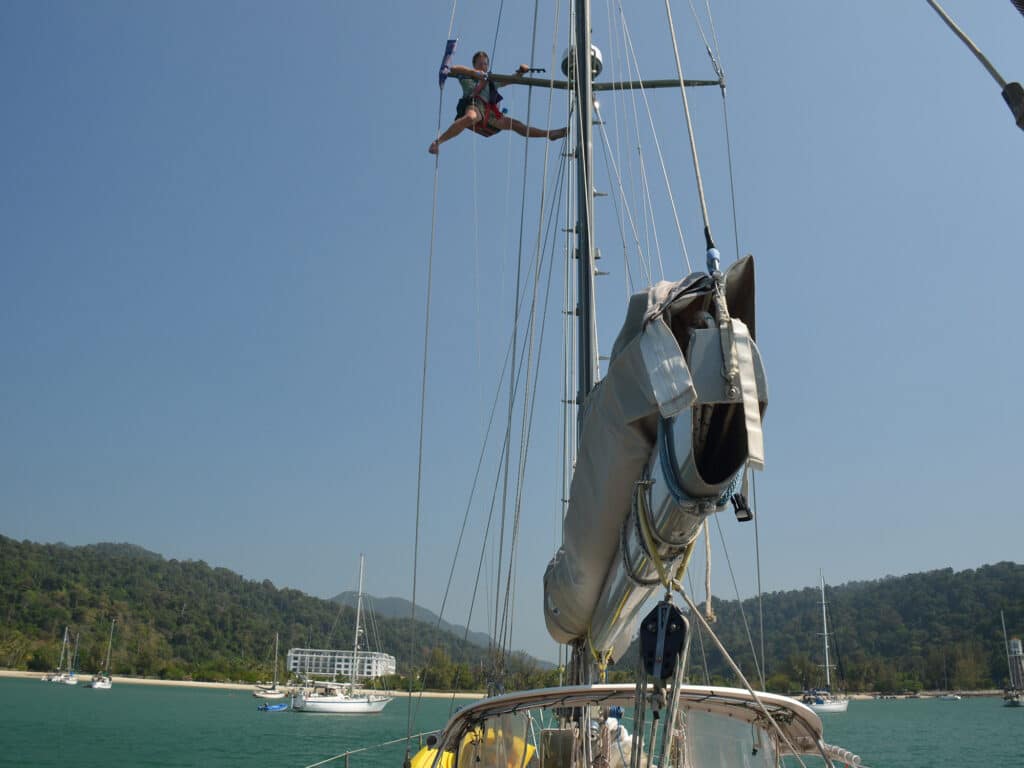
Inspecting the condition of your rigging is an important step in safe-passage preparation, so going aloft is—or should be—on the maintenance shortlist of many cruisers. Does that sound like a glorious opportunity to gaze at your boat from an eagle’s-eye view or a nerve-racking ascent to avoid (or get over with as quickly as possible)? Maybe the reaction is, “Hell no, that’s a job for a rigger!” However you feel about going aloft, cruisers should be familiar with safe practices for ascending their boat’s mast(s). Here are some tips for doing it well.
Safety first
Going up the mast is serious business that requires good, proven equipment, safe practices, and an eye to knowing when not to defy gravity. If you question any of the safety checks described here, make a plan and go aloft only after addressing them.
Overview
Because humans are clever, there are a surprising number of ways to ascend toward the stars on a sailboat, such as sitting in a bosun’s chair, dangling in a harness, or climbing mast steps, whether solo or with a winch buddy. There is no best approach, just the one that works for you.
Make a plan
If doing a solo ascent, anticipate the necessary tools so you don’t have add a trip for that missing screwdriver. When assisted, discuss if you will inspect things on the way up or down, communication protocol, and line-handling technique.
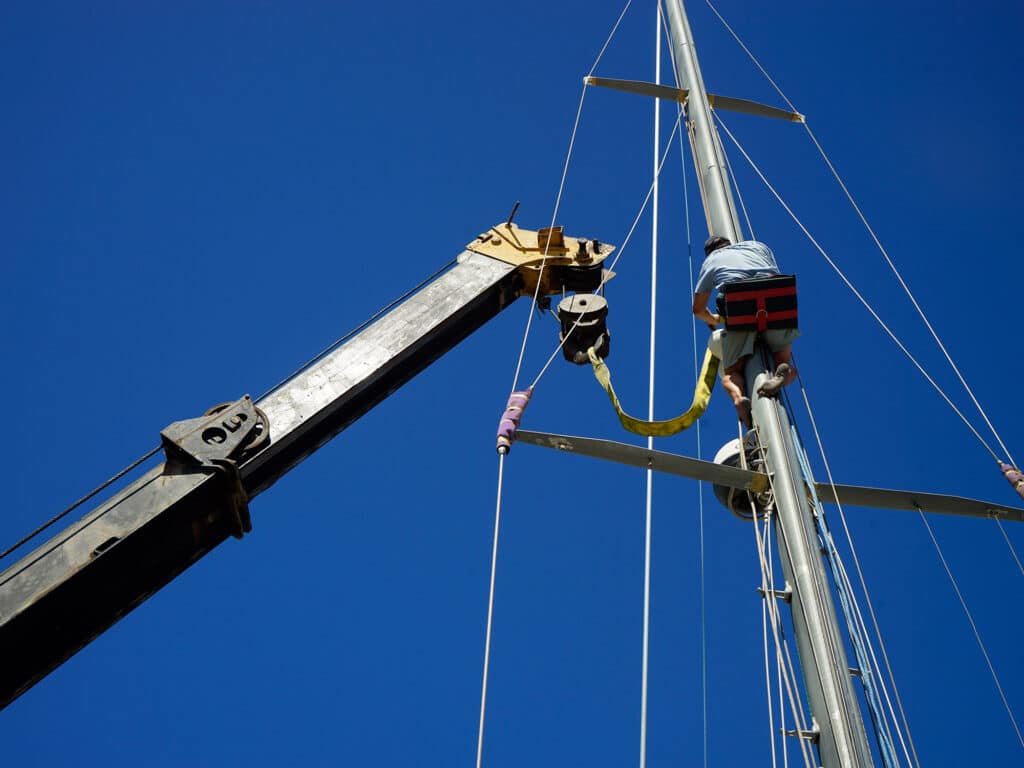
What tools will you need, and how will you carry them? Items should be accessible and safely stowed. Jamie has a canvas bucket that slings onto the side of the bosun’s chair; it holds enough without being too deep to reach items easily. If you don’t usually put keepers on your sunglasses or eyeglasses, this is a good time to do so. Remember that even a small item dropped from aloft can have a much greater impact below. Crew on deck should stay away from the mast base when not actively raising or lowering the aloft person.
Unambiguous communication
Does stop mean soonish or, “My knee jammed between shrouds, and I will bleed if hoisted 1 millimeter farther”? Talk through the steps you plan to take. Will you stop at spreaders on the way up, the way down, or both?
Assume you will not be able to hear each other without aid. If you have wireless headsets (called “marriage savers”) for anchoring, such as Bluetooth Sena headsets or 1.9 GHz Eartec headsets, this is a perfect additional use. A clipped-on handheld VHF on an unused channel is another option. Or simple earbuds or a headset and a phone are an easy hands-free alternative. There are even apps you can use to connect 1-to-1 without internet, such as by using NFC or your boat’s network.
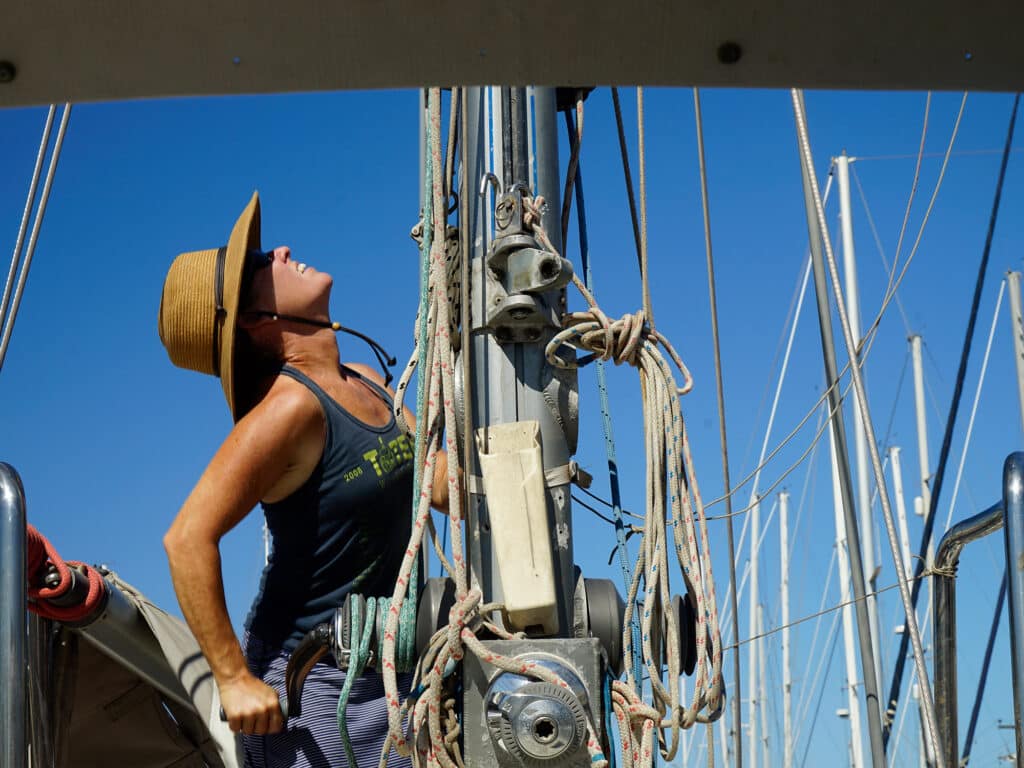
Good gear
Start with the device between the human and hoist mechanism. If using a harness, is it in good condition and at least reasonably comfortable? Same if it’s a bosun’s chair. Check that the mast steps aren’t corroded, the halyard isn’t chafed or UV-damaged, the winch is working well, and the rope clutch securely holds the line under load. Note that a winch self-tailing mechanism alone is not enough to secure a person aloft. We know of a fatality when the halyard slipped from a self-tailer and the rope clutch did not engage.
Lift mechanism
Use halyards or a boom topping lift, but not a spinnaker halyard (or other external halyards) as the primary hoist; it’s OK to use these as backup safety lines. Spinnaker halyards run through hanging external blocks, adding greater risk for failure.
When Totem was in the Seychelles, new cruising friends asked for help after discovering a couple of broken wire strands on their 55-foot monohull and hired Jamie to inspect the rigging. He was inclined to go up the mast—barely inclined, thanks to a sloppy anchorage and gusty trade winds. As Jamie started rigging the bosun’s chair, the owner grabbed the spinnaker halyard as the primary hoist for the ride up. Jamie said, “No, I don’t go up on spinnaker halyards.” The owner pleaded, and the wind blew too much to drop the furled main and headsail, so Jamie acquiesced. Upon reaching the masthead, the first thing Jamie checked was the external spinnaker halyard block—and he found a crack in the shackle. Next was the fastest controlled descent possible.
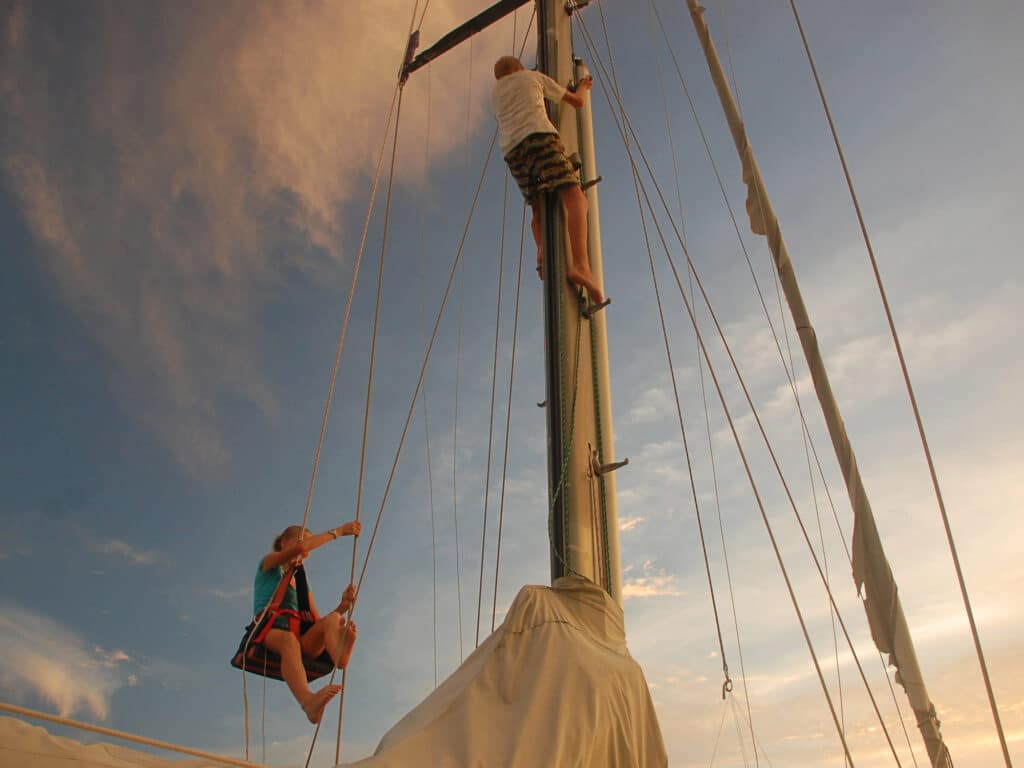
Make sure the halyard(s) are in good condition. If the halyard does not pass through a rope clutch, you must secure the tail to a cleat after the winch. A second halyard (with an additional person to tail it) acts as a safety line, just in case.
Don’t use halyard shackles; they can fail, leading to catastrophe. Instead, tie halyards with a bow line. Consider bringing up a safety tether to clip to the mast if working at one spot for a while.
Test!
Before ascending, do a shock-load test. It’s free, easy and really good piece of mind. If going up in a chair or harness, hoist your ride a few feet above the deck, then bounce. Really throw your weight down into it. You want to check the shock load from a safe height, not one that can break bones or do neurological damage.
Electric winch?
No. Well, it’s hard to make this choice when push-button power is an option, as it turns out to be a lot of work to haul someone up the mast. But electric winches are powerful, and very bad things can happen very quickly. Power-winch accidents in hoisting scenarios have resulted in the loss of fingers and limbs. There is also the risk of not stopping at the masthead in time, so the trusty bow line jams or gets pulled into the halyard sheave. That can cause the line to fail, which is easier than you might think because electric winches work so quickly and powerfully. Clear, unambiguous communication with your partner becomes even more important. If you do go up with the power winch, the winch operator must use extreme caution.
Going up!
Take pictures while you’re up there. No, it’s not just to show how cool you look at the masthead. Get a lot of photos of the rig, both zoomed in (in focus) and panned for context. You might also find something unexpected to capture and examine later. Reviewing photos offers another opportunity to rig-check after the climb and spot things you might have missed.
Descend safely
Gravity is your friend—and your foe. It will make lowering you easier, but the ride down can feel uncomfortably jerky. To reduce jerkiness, the deck support crew should ease the line smoothly in 3- to 4-inch sections rather than small increments. Be sure the eased halyard has a fair lead to the winch so there is no chance the line can jump over the end of the winch.
The other contributing element for a smoother ride is being mindful of the number of wraps around a winch—too many, and it won’t ease smoothly. Usually, two wraps provide enough friction to hold the person’s weight while still letting the line slide around the winch as needed. If the weight feels like too much to hold easily, then add another wrap.
Remember that returning to deck level is more dangerous because the self-tailer and rope clutch are not used when easing.
The easiest inspection
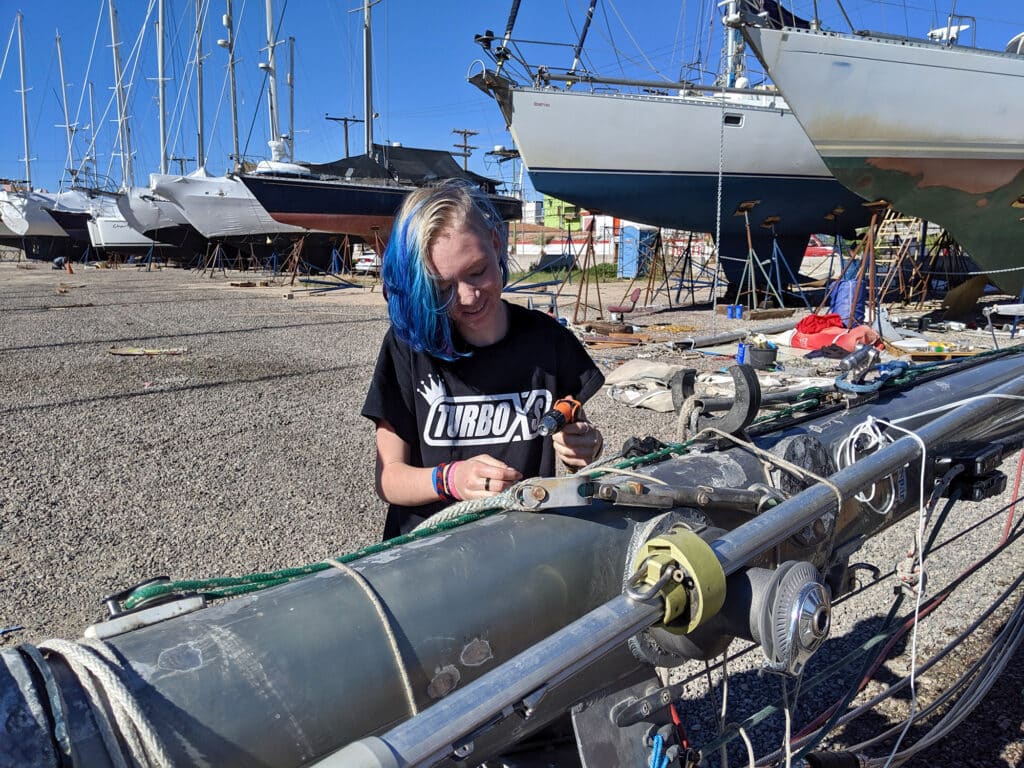
Does it need to be said? It’s a lot safer and easier to inspect your rig components when they’re lying on sawhorses at ground level and not in the boat. This is the current state of Totem’s equipment, although we hope to have it back up again soon. We’re counting down to the boat’s splash…and sailing to Puerto Vallarta in December!








